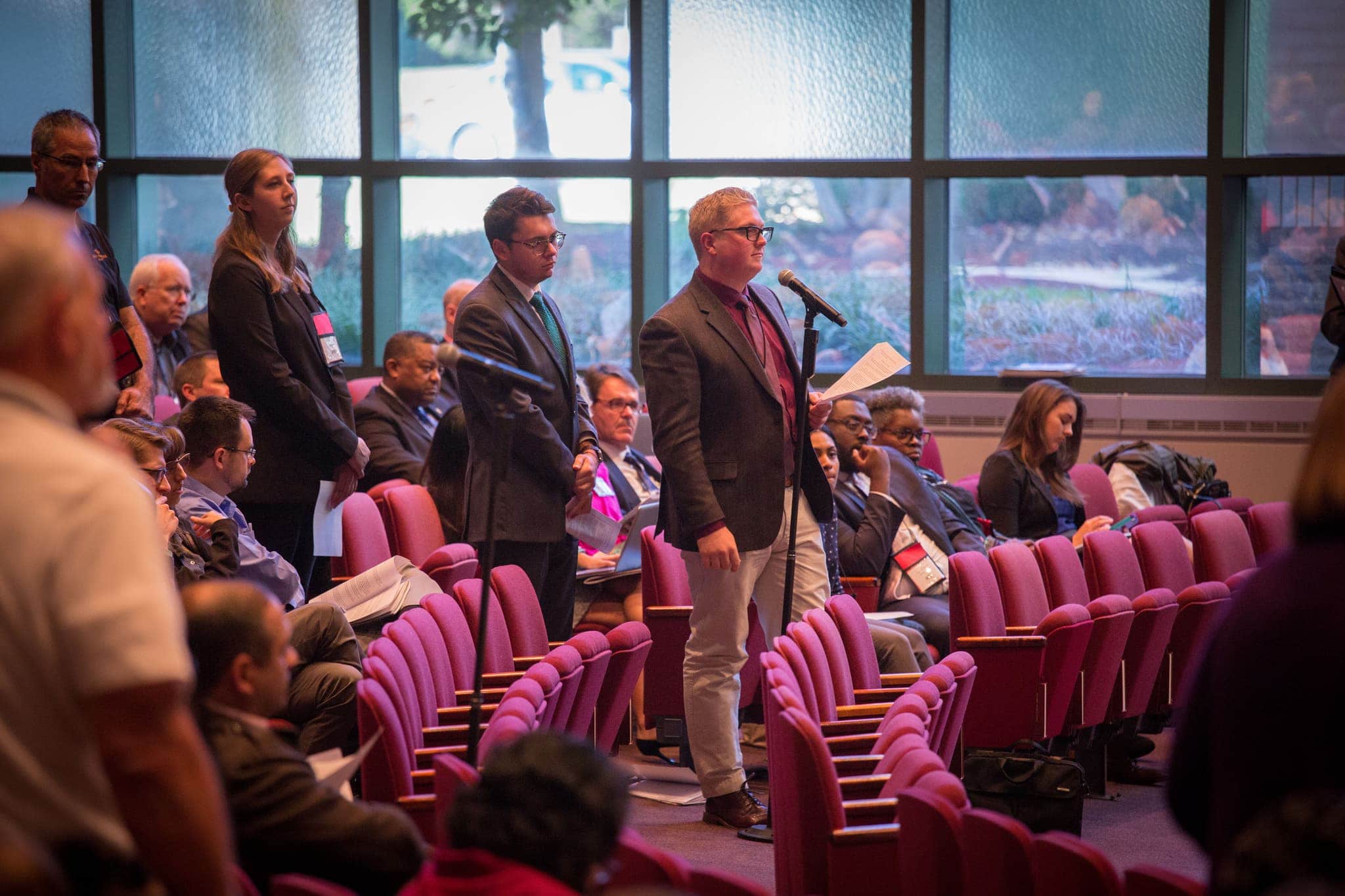
The business session of the first full day of the 2016 North American Division (NAD) Year-End Meeting closed with a discussion of the “Unity in Mission: Procedures in Church Reconciliation” document that was voted by the General Conference Executive Committee during their Annual Council Meeting on Oct. 11, 2016.
Members of the North American Division Executive Committee spent a two-hour period seeking clarification and shared feedback on the document that seeks a process for the potential conflict that may arise when a disagreement takes place involving “biblical principles as expressed in the Fundamental Beliefs, voted actions, or working policies of the Church.”

NAD President Daniel R. Jackson chaired the discussion and, after a short introduction to the topic, expressed his desire for each committee member to feel open in sharing their feelings even if they are in disagreement with his own. Jackson then asked NAD Executive Secretary Alex Bryant to explain the path that produced the document, with Bryant sharing the developments that resulted in the document’s creation and explained that a process was in development for policy violations. Jackson acknowledged this will impact the two NAD unions that have ordained women into pastoral ministry, currently not allowed by voted General Conference policy, and additionally all world divisions are being called upon to audit their fields for potential policy violations.
“I go to a school that believes in equality. I believe in equality. . . Students are confused, hurt. They feel helpless.”
Once the floor was opened for discussion, microphones were quickly filled with young members of the NAD Executive Committee seeking answers to the many questions that the voted document was causing in their local communities. Several representatives of the Adventist Intercollegiate Association, the student leaders of the Adventist institutions of higher education in the NAD, expressed concern that the document was not understood by younger members in the church and causing discomfort as they viewed it as a threat to their future.
One young delegate shared, “I go to a school that believes in equality. I believe in equality. . . Students are confused, hurt. They feel helpless.”
Another countered with, “As a young person, I support the GC's decision and the biblical distinction in roles between men and women.”
“This issue is talked about on our campus a lot," said one university student representative, “It has a large bearing on whether people will stay in the church.”
The same student then wondered what they would go back and say to their fellow students. Jackson responded with an emotional plea, “Sometimes (the church) makes a mess of things, and we need your forgiveness, but not your absence.”
More seasoned committee members’ comments also mirrored their younger colleagues with Lake Union Conference President Don Livesay asking all members who had direct contact with a young person negatively impacted by the document to stand. Nearly everyone in the auditorium rose to their feet.
Jackson and Bryant said the NAD would follow the protocols that are established by the General Conference document, but clarified that currently “there has not been a formal finding of noncompliance.”
Discussion on the document was tabled for later in the business proceedings as the Sabbath hours were approaching and the chair felt the need to have proper time to prepare for the evening vespers program.
As the oldest publishing platform of the Seventh-day Adventist Church, the Adventist Review (est. 1849) provides inspiration and information to the global church through a variety of media, including print, websites, apps, and audio and video platforms.Content appearing on any of the Adventist Review platforms has been selected because it is deemed useful to the purposes and mission of the journal to inform, educate, and inspire the denomination it serves.Unless identified as created by “Adventist Review” or a designated member of the Adventist Review staff, content is assumed to express the viewpoints of the author or creator of the content.